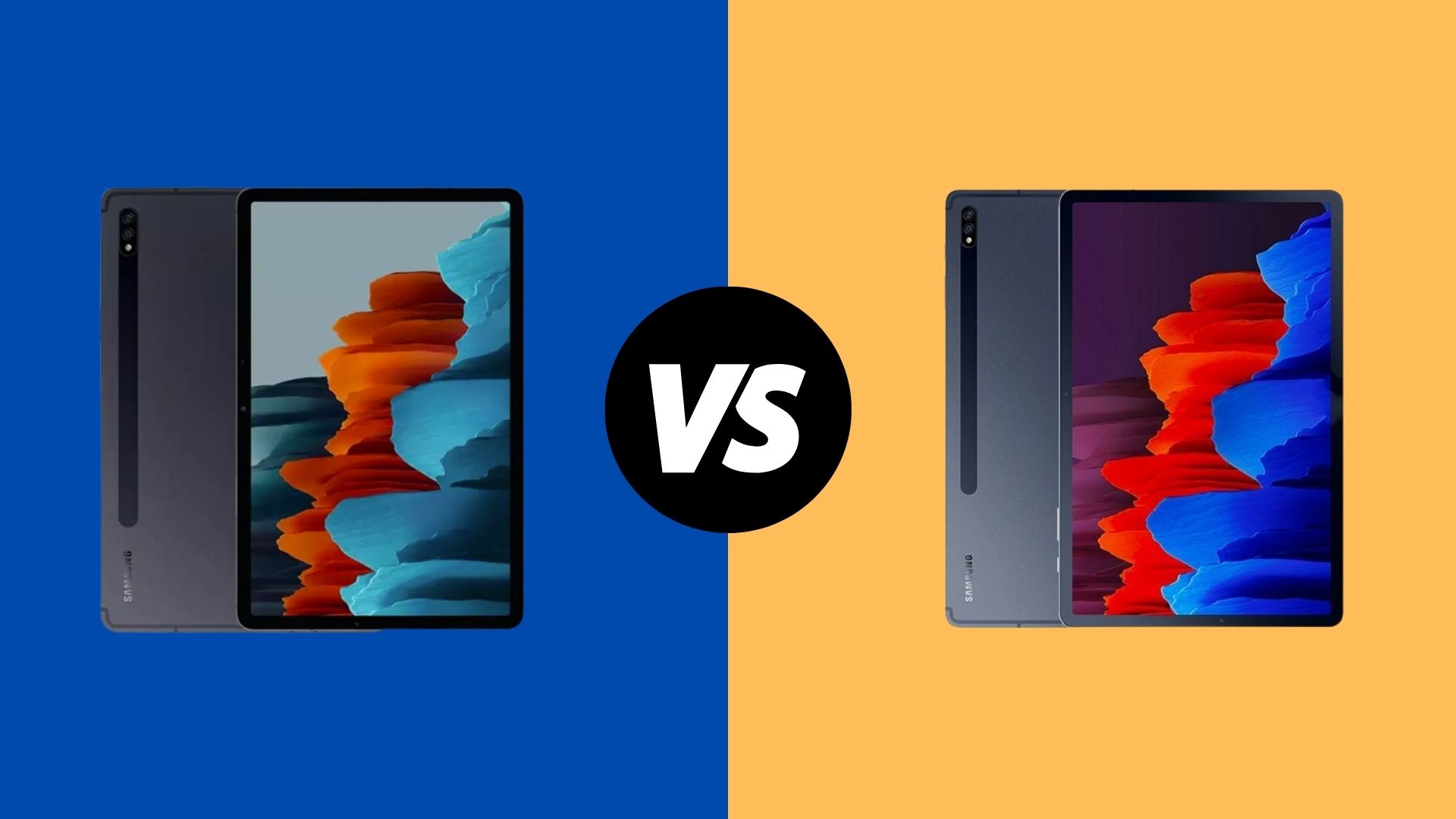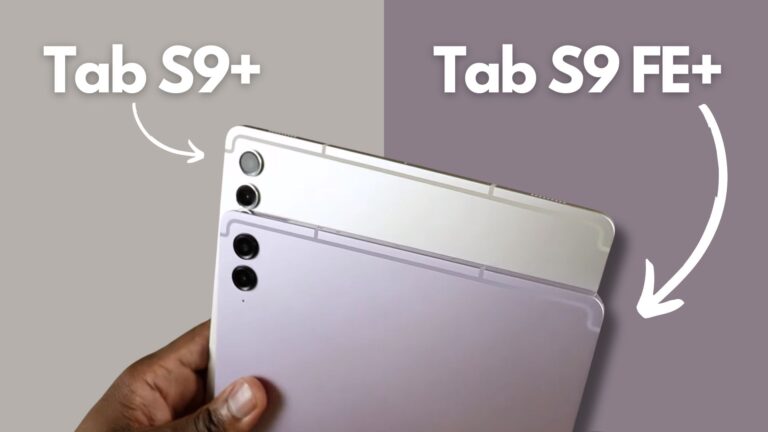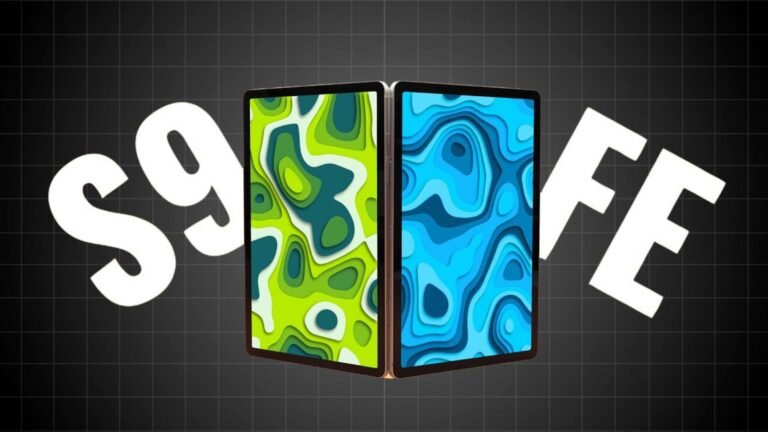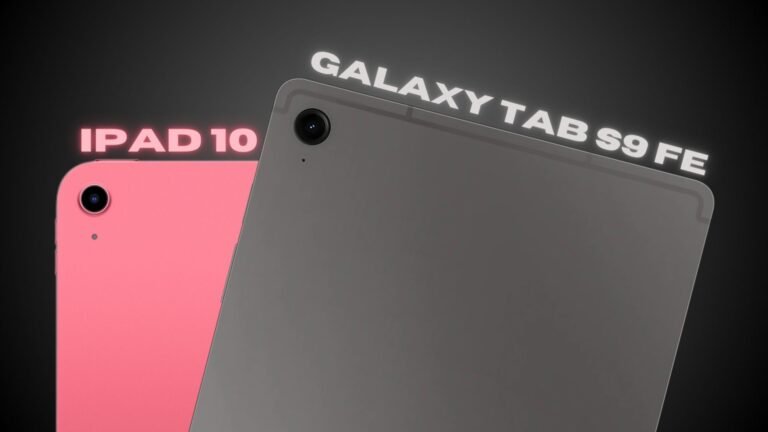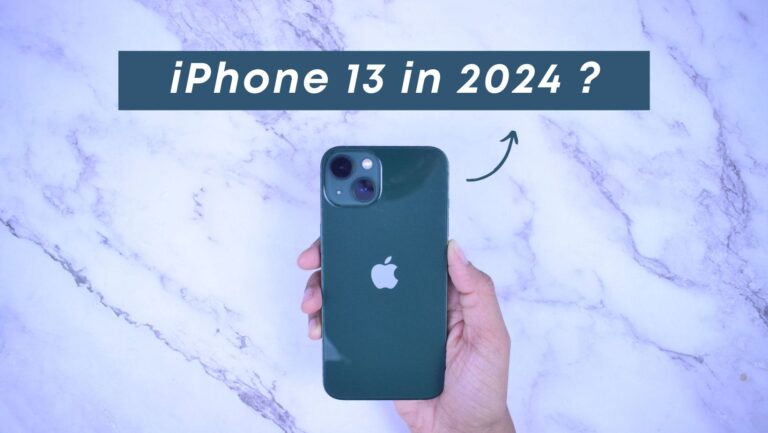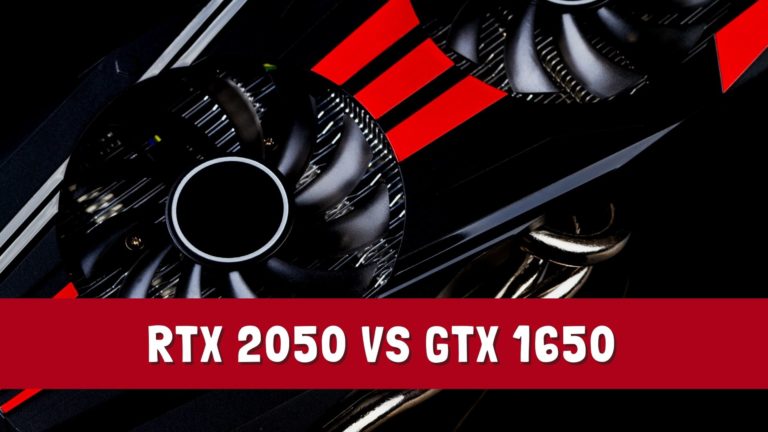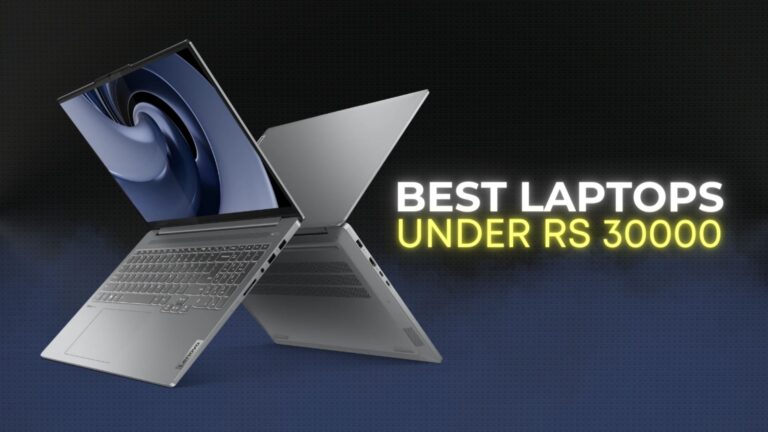When Samsung announced the Galaxy Tab S8, I was ecstatic but also a little puzzled. Because the Tab S7 is one of my favourite tablets, I was excited to get this newer version and see how much better it is. I mean, Samsung did update it, but I was wondering if they did enough.
Galaxy Tab S8 vs Galaxy Tab S7: Specs
| Galaxy Tab S8 | Galaxy Tab S7 | |
| Display | 11” LED FullHD, 120Hz | 11-inch 2560 x 1600-pixel TFT panel (up to 120Hz) |
| Processor | Snapdragon 8 Gen 1 | Qualcomm Snapdragon 865 Plus |
| Storage | 128GB/256GB | 128GB/256GB |
| Memory | 8GB | 6GB/8GB |
| Cameras | Rear: 13MP & 6MP (Ultra Wide). Front 12MP (Ultra Wide) | Rear: 13MP & 5MP (Ultra Wide). Front 8MP |
| Connectivity | WiFi 6E (2.4/5/6GHz), Bluetooth v5.2 | 5G (optional), LTE (optional), Wi-Fi 6, Bluetooth 5.0 |
| Battery | 8,000mAh Li-Ion | 8,000 mAh |
| Size | 9.99 x 6.51 x 0.25 | 10 x 6.5 x 0.2 inches |
| Weight | 1.1 pounds | 1.1 pounds |
Galaxy Tab S8 vs Galaxy Tab S7: Design and Size
Starting with the dimensions, the Tab S7 and Tab S8 have the same footprint. We have the same design all the way around, with rounded corners, squared-off edges, and the same size bezels.
Now, this was an area where I thought Samsung could give us a little more by making the bezels smaller and either reducing or increasing the display size in the same footprint. Of course, I’m being picky, but I always want to see companies push the boundaries in order for us, the consumers, to get better products.
On the right of both devices, we have volume up and down controls, as well as the same power button with an integrated fingerprint reader, which worked great for me with the Tab S7 and continues to work well with the Tab S8.
Although I prefer the on-display fingerprint sensor found in the Tab S8 Plus and Tab S8 Ultra, I understand why Samsung needed to keep that upgrade as a differentiator between the Tab S8 and the higher-end models.

Both tablets have four speakers and a microSD card slot that allows you to expand your internal storage by up to 1 TB, which you can use for apps and files in both cases. Now, not all apps and games work, but the majority of the ones I tried did, and they ran smoothly from the microSD card.
We’re also seeing USB-C ports on both devices, but the one on the Tab S8 is 3.2, versus 3.1 on the Tab S7. Both ports offer a display port out, but the Tab S8 has faster transfer speeds, so if you regularly move files to and from your tablet, you’ll appreciate this additional bandwidth.
Galaxy Tab S8 vs Galaxy Tab S7: Display
Both tablets offer a fully laminated, 11 inch TFT display with a resolution of 2560×1600, a 16:10 aspect ratio, and a pixel density of 274 pixels per inch. Now in terms of image quality, this display is fantastic, so even though we didn’t get an upgrade, I’m not really disappointed because I’ve been super happy with the display on the Tab S7. It’s also an adaptive 120 hertz display, meaning that both tablets can detect what type of content is being displayed, and then either reduce the refresh rate in order to save on battery life, or increase it when it offers a more responsive and fluid user experience.
Galaxy Tab S8 vs Galaxy Tab S7: Battery Life
And speaking of battery life, that was another area where I thought we could see an improvement, but we’re actually getting the same 8000 milliamp per hour battery on both. So even though we didn’t get an upgrade in terms of display quality, I’m not really disappointed because I’ve been extremely pleased with the display on the S7. It’s also an adaptive 120 hertz display, which means both tablets can detect what type of content is being displayed and adjust the refresh rate accordingly, either to save battery life or to provide a more responsive and fluid user experience.
Galaxy Tab S8 vs Galaxy Tab S7: Camera
Now looking at the camera systems, we are seeing a few small differences and then one important one. So starting with the rear-facing cameras, the Tab S7 has a 13 megapixel wide camera and a five megapixel ultra wide, while the Tab S8 has a 13 megapixel wide but then a six megapixel ultra wide.
Not really a major difference, but to be fair, the image quality is actually pretty good if you have enough light, and I almost never use these cameras because the ones on my phones are so much better.

Now the upgrade that I really like is the front facing camera which was upgraded from a wide eight megapixel camera on the Tab S7 to an ultra wide 12 megapixel one on the Tab S8. This isn’t just an upgrade in resolution and angle of view, but it also offers a new feature called auto framing. Basically, the Tab S8 camera can identify a subject and then track it as it moves around, and then zoom in and out to make sure that it’s always properly framed. This is actually a really neat feature if you do a lot of conference calls or if you make video calls where you’re moving around.
Galaxy Tab S8 vs Galaxy Tab S7: Speakers
Moving on to audio, both tablets have a quad speaker system, and the AKG tuned speakers sound identical in every test I’ve done. It’s another area where I was already pleased with the Tab S7’s audio quality; it’s great for watching movies and playing games.
Now that I have four speakers on my tablet, I love that I can still get great audio even if I accidentally cover two of them while holding the tablet.
Galaxy Tab S8 vs Galaxy Tab S7: Performance
Now when we look at processing power, Samsung did make a change with the processor but we see some unexpected results here. So the Tab S7 comes with the Snapdragon 865 plus, and the Tab S8 comes with the newer Snapdragon 8 Gen 1.
For single-core performance, we’re getting 955 score on the Tab S7 versus 1,043 score on the Tab S8. And for multi-core performance, we’re looking at 3,275 score on the Tab S7 and 3,194 score on the Tab S8, so it’s not really a major difference. But when we look at the GPU performance, the Tab S7 scored 3,602 versus 6,052 score on the Tab S8, and that is a significant improvement.
I haven’t observed any big changes in the activities I engage in. So both tablets are quite responsive, programmes open rapidly, and switching between apps is virtually instantaneous, and I’ve been really happy with their performance.
The Tab S7, of course, came with Android 10, whereas the Tab S8 comes with Android 12 and One UI 4, which is a big update with all of the new productivity and multitasking features, as well as a more responsive UI and enhanced security.
Long-term support is another key enhancement. Samsung now offers four years of OS upgrades and five years of security updates on the Tab S8, which I adore.
It’s time to unwind after a long day at work or school, and both of these tablets make terrific gaming platforms. The display is amazing, the speakers give directional sound so you can hear your footsteps, and the form factor makes them quite pleasant to hold for long gaming sessions. I could also use an Xbox controller to control both tablets and play all of my favourite Xbox Game Pass apps. Both tablets functioned beautifully and the gameplay was seamless as long as I had a good and reliable internet connection.
Galaxy Tab S8 vs Galaxy Tab S7: Productivity
S Pen
If you want to get more work done with these tablets, you’ll be pleased to learn that they both come with a S Pen. Now, I really like how Samsung includes these in the price of the tablet, so users don’t have to pay extra to get full functionality.

Samsung claims that the newer S Pen has a lower latency of 2.8 milliseconds, compared to nine milliseconds on the previous model, but I haven’t noticed any difference, and I find both of them to be extremely responsive.
Both are Bluetooth-enabled, giving you access to all of the extra wireless features and gestures.
Keyboard Case
A keyboard case is an accessory that I always include, and Samsung offers two different models: the Book Cover Keyboard and the Book Cover Keyboard Slim.
The standard Book Cover Keyboard is made up of two parts: the keyboard itself, which includes a touchpad, and a separate back piece. Now, the keyboard is actually quite good, and I like that I can separate the backs of both of these tablets and use them in tablet mode while still protecting the device’s back and the S Pen.

The slim version now consists of a single piece that wraps around the tablet and includes a slot in the centre for storing the S Pen. When set up, this design takes up less space on your desk, but it lacks a touch pad and does not protect the S Pen when charging it on the back.
DeX, which transforms the user interface into a desktop operating system, is one area where I really enjoy using the Book Cover Keyboard. It comes with a taskbar where you can minimise apps, a desktop with icons, multiple floating windows, and the Book Cover Keyboard, which gives me a laptop-like experience.
Galaxy Tab S8 vs Galaxy Tab S7: Price and Storage
The Galaxy Tab S8 goes on sale on February 25 for a starting price of $699. There are two models available. One model has 128GB of internal storage while the other has 256GB. Both feature 8GB of RAM.
